Slug Control: Effective Strategies and Insights
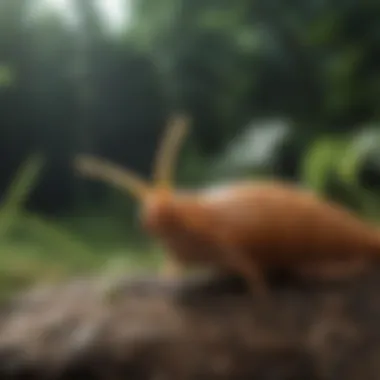
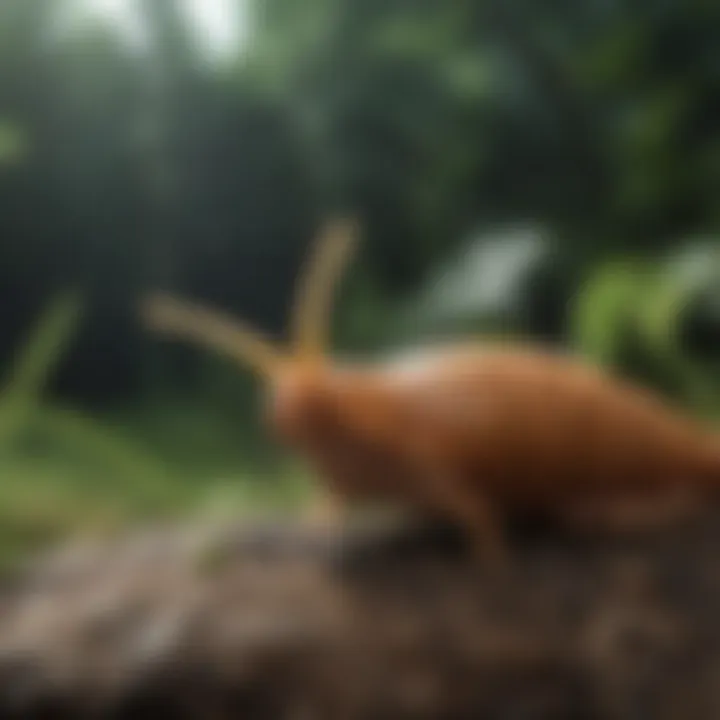
Intro
Slug infestations present significant challenges in both agricultural and horticultural contexts. Farmers and gardeners often find these slimy creatures wreaking havoc on their plants, disrupting not only aesthetics but also productivity. Understanding their biology, behavior, and the damage they cause is crucial. This article serves as a guide to effective slug pest control, drawing on research-supported strategies that highlight sustainable practices.
Recognizing the impact slugs have on crop yields is essential. They feed primarily on leaves, flowers, and stems, causing direct harm to plants. Additionally, slugs can host various parasites and diseases, posing a broader risk to agricultural health. With the right strategies, it is possible to mitigate these risks and manage slug populations effectively.
The following sections will explore the core aspects of slug management, focusing on both scientific insights and practical methods. By weaving together knowledge and actionable tactics, this comprehensive narrative aims to inform and educate those dealing with slug related challenges.
Understanding Slugs as Pests
Understanding slugs as pests is crucial for effective pest management in agriculture and gardening. As mollusks, slugs play various roles in ecosystems but can become significant nuisances when their populations grow unchecked. Their feeding habits can cause considerable damage to crops, making it essential to comprehend their biology, behavior, and environmental impact.
Defining Slugs
Slugs are soft-bodied gastropods found in diverse environments. Unlike snails, they lack a prominent shell, which contributes to their vulnerability yet enables them to inhabit a range of habitats. Typically, slugs thrive in moist, shaded areas, making gardens, flower beds, and agricultural fields ideal environments. These creatures are primarily nocturnal, emerging during cool nights or damp conditions to feed.
Biological Characteristics
Slugs exhibit distinct biological features that enable them to respond to environmental conditions. They have a muscular foot that aids in movement across various surfaces. Their bodies are covered in mucus, which facilitates moist locomotion and prevents desiccation. This slimy secretion also serves as a defense mechanism against predators. Slugs display varying colors and sizes, presenting challenges in identification.
Globally Recognized Species
Several slug species are prominent in agricultural contexts. The common garden slug, Agriolimax reticulatus, and the grey field slug, Deroceras reticulatum, are among the most recognized. These species are widespread and often noted for their ability to damage a wide range of crops like lettuce, cabbage, and other leafy vegetables. Recognizing these species is pivotal for implementing targeted control measures.
Lifecycle Stages
The lifecycle of slugs goes through several stages, making their management complex. Adult slugs typically reproduce in spring or early summer, laying clusters of eggs in moist soil. Each cluster can contain up to 50 eggs, which hatch into young slugs after a few weeks. The juvenile slugs grow rapidly, reaching maturity in a few months. This rapid lifecycle allows slug populations to rebound quickly if left uncontrolled. Recognizing these stages can significantly aid in synchronizing control measures for effective management.
Ecological Impact of Slugs
Understanding the ecological impact of slugs is crucial as it broadens the perspective on how these creatures influence their environments. Slugs, while often seen as mere pests, play various roles in ecosystems that can be either beneficial or detrimental. Exploring these roles, particularly in relation to agriculture, helps inform control strategies and practices that acknowledge their ecological significance.
Role in Ecosystems
Slugs are primarily decomposers, contributing significantly to nutrient cycling. They feed on decaying plant matter and organic material, facilitating the breakdown process and returning nutrients to the soil. This function supports soil health, promoting biodiversity by sustaining microbial communities.
Furthermore, slugs serve as prey for various predators such as birds, mammals, and insects. Their presence in the food web is an integral part of many ecosystems. Removing slugs can disturb these predator-prey relationships, leading to potential imbalances.
- Benefits of Slugs:
- Nutrient cycling
- Supporting biodiversity
- Serving as a food source for predators
Threats to Agriculture
While slugs have ecological benefits, their populations can become problematic in agricultural settings. Infestations can lead to significant damage to crops, particularly in moist climates. As slugs feed on seedlings and tender plants, they can cause severe economic losses for farmers. The threat they pose varies by crop type and environmental conditions.
In many cases, a change in farm practices, such as reduced soil tillage or crop rotation, can inadvertently create favorable conditions for slug growth. Understanding these dynamics is critical for farmers to develop effective management strategies that do not overlook the ecological roles slugs perform.
Impact on Crop Yields
The presence of slugs can drastically affect crop yields. Reports indicate that in certain conditions, slugs can reduce yields by as much as 70% in vulnerable crops. This economic impact places pressure on agricultural sustainability and necessitates effective pest management strategies.
- Yield Reduction Factors:
- Type of crop
- Stage of growth
- Environmental factors


Farmers must be aware of how to recognize and address slug infestations to protect their livelihoods while also considering the wider ecological implications of their actions. Captioning this context assists stakeholders in realizing that managing slugs entails not just extermination, but also a balanced approach to cohabitating with the ecosystem.
Identifying Slug Infestations
Recognizing the presence of slugs in a garden or agricultural setting is essential for effective pest control. Early identification of slug infestations can prevent significant damage to crops and plants. Being able to spot these pests in their early stages allows for timely intervention, which can mitigate their effects on agriculture and horticulture. Understanding the indicators of slug activity enhances the chance of implementing successful control measures.
Signs of Infestation
Identifying the signs of slug infestations can be straightforward if one knows what to look for. Some key indicators include:
- Visible Slugs: Adult slugs can often be found during dawn or dusk. Their slimy trails are visible on the soil and plants.
- Feeding Damage: Look for irregular holes in leaves or tender plant parts, which suggest slugs have been feeding.
- Mucus Trails: The trail left behind by slugs when they move can be identified easily. This mucus can be recognized by its glossy sheen.
- Eggs: Slug eggs are small, round, and often laid in clusters in moist areas. Finding these eggs can indicate a forthcoming infestation.
Noticing any of these signs should prompt an observation of the environment for further assessment.
Monitoring Techniques
Monitoring slug populations is a critical part of management strategies. Various techniques can be utilized to track and assess the extent of infestations:
- Visual Inspections: Regular checks of crop areas at different times of the day can help detect slugs. Focus on plants with signs of damage.
- Traps: Beers or commercially available slug traps can attract and capture slugs effectively. Place these traps in areas where slug activity is noted.
- Environmental Assessments: Monitor moisture levels in the soil, as high humidity and wet conditions favor slug populations. This monitoring can inform preventive measures against infestation.
- Recording Observations: Keeping a log of sightings and damage can assist in monitoring trends over time. This data is valuable to understand and predict slug behavior.
By applying these monitoring techniques, one can maintain better control over slug populations, aiding in the overall strategy of pest management. This awareness and vigilance are crucial for anyone involved in agriculture or gardening, as they directly influence the effectiveness of subsequent control measures.
Traditional Pest Control Methods
The significance of traditional pest control methods cannot be understated in the context of slug infestations. These methods provide an immediate solution to reduce slug populations and limit damage to crops. They encompass both chemical solutions and physical barriers, each having unique benefits and considerations that cater to diverse agricultural settings and pest control needs.
Chemical Solutions
Types of Chemical Pesticides
Chemical pesticides are widely accepted for managing slug populations. They are formulated to target slugs specifically, making them a focused choice for pest control. The key characteristic of these pesticides is their ability to deliver quick results, eliminating slugs upon contact or ingestion.
Common types include iron phosphate, which is often used because it is less harmful to non-target organisms. This particular pesticide is attractive to slugs and disrupts their digestive processes. This makes it both effective and safer to use in gardens where beneficial insects might be present. However, while chemical solutions might provide immediate results, they often come with considerations regarding environmental impact and potential resistance that slugs can develop over time.
Application Best Practices
Successful application of chemical pesticides involves adhering to certain best practices. Proper timing and method of application significantly impact effectiveness. For instance, applying pesticides in the evening can enhance its effectiveness, as slugs are more active at night.
Moreover, ensuring a consistent coverage on the affected areas ensures maximum exposure to slugs. Additionally, using chemical solutions in conjunction with other pest management strategies is often recommended. This combination may enhance the control of slug populations without solely relying on chemicals, which can lead to resistance and other ecological concerns.
Physical Barriers
Row Covers
Physical barriers like row covers serve as an effective defense against slugs. They protect crops while enabling light and moisture to reach the plants. The key characteristic of row covers is their capacity to create a controlled environment. This makes it a beneficial choice for both home gardens and larger agricultural settings.
Row covers act as a deterrent for slugs, preventing them from reaching the plants. They are also simple to maintain and can be reused for multiple planting seasons. However, there are drawbacks, such as the potential for overheating if not removed during sunny days.
Slug Traps
Slug traps are another practical tool in the arsenal of pest control. Their operation is straightforward: they lure slugs, often using bait, and trap them either in a container or a sticky substance. The key characteristic of slug traps is their non-toxic nature, making them suitable for organic farming practices.
These traps not only capture slugs but also allow for monitoring slug populations. Regularly checking traps provides insights on infestation levels and helps inform further control measures. The disadvantages include the need for frequent maintenance to ensure traps remain functional and effective.
"Effective pest management requires a balanced approach that combines immediate interventions with long-term strategies."
By utilizing both chemical solutions and physical barriers, farmers can tackle slug infestations. This two-pronged approach emphasizes the importance of integrating multiple strategies to achieve optimal results in pest management.
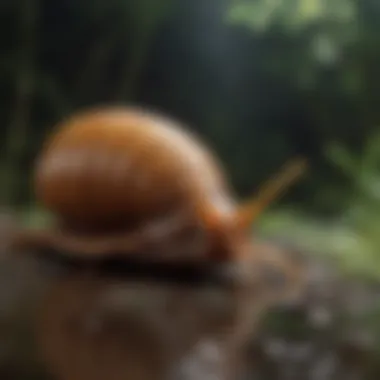
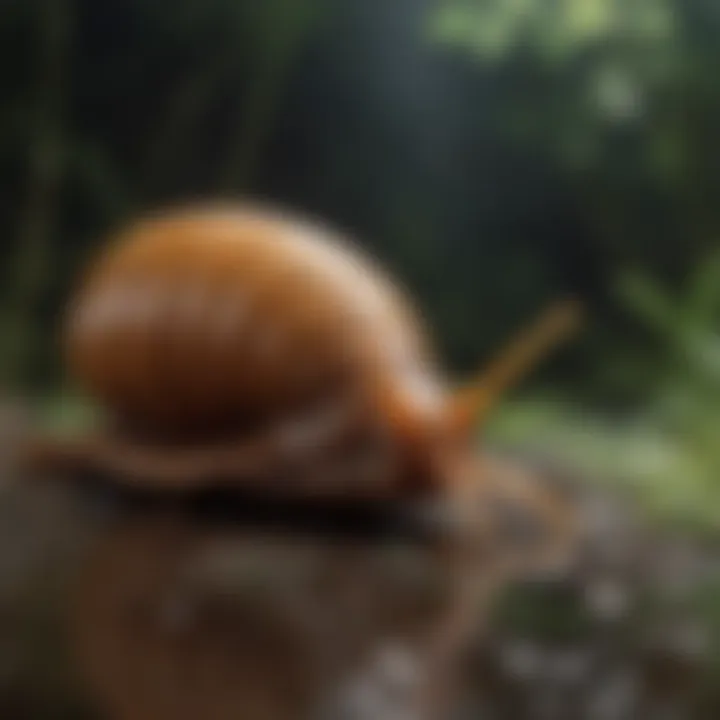
Integrated Pest Management (IPM)
Integrated Pest Management, or IPM, plays a crucial role in the effective control of slug populations. This systematic approach combines various management strategies to minimize pest damage while reducing reliance on chemical solutions. The idea is to create an ecosystem where natural checks and balances can manage pest species, including slugs, effectively. The benefits of IPM are manifold. It not only promotes sustainable agriculture but also minimizes environmental impact and enhances the economic viability of pest control practices.
Principles of IPM
The principles of IPM focus on understanding pest dynamics and integrating knowledge from different disciplines. Key components include:
- Monitoring: Regularly checking for slug populations helps in assessing their numbers and behavior. This includes visual inspections and the use of traps.
- Identification: Correctly identifying the species of slugs involved is essential. Different species may require varied management approaches.
- Thresholds: Establishing action thresholds allows for timely intervention before slugs cause significant damage.
- Cultural Control: Practices like crop rotation and modifying planting times can make the environment less favorable for slugs.
These principles enhance the effectiveness of pest management strategies, leading to better long-term results.
Combining Methods
Combining multiple pest control methods is central to IPM. A multidisciplinary approach that utilizes both biological and cultural techniques can be beneficial. Some effective combinations include:
- Biological Control Agents: Using nematodes or predatory insects that naturally prey on slugs to keep their numbers in check.
- Cultural Practices: Like planting slug-resistant crops or adjusting irrigation practices to reduce moisture levels that attract slugs.
This amalgamation of strategies ensures that control does not solely rely on chemical methods, hence promoting an ecological balance.
Economic Thresholds
Economic thresholds are a pivotal consideration within IPM frameworks. This concept refers to the pest population level at which control measures are justified to prevent unacceptable damage or economic loss. Factors influencing this include:
- Crop Value: Higher valued crops may justify more intensive management practices.
- Cost of Control Methods: Analyzing the cost of potential control measures against the expected benefits is imperative.
- Market Timing: The timing of harvest and market conditions can also affect economic thresholds.
By understanding and applying economic thresholds, practitioners can make informed decisions about when to implement control measures, ensuring resource use is both efficient and effective.
In summary, IPM is a robust approach that combines traditional and innovative pest control methods to effectively manage slug infestations while promoting sustainability and economic for agricultural systems.
Alternative Control Strategies
Alternative control strategies are essential in managing slug populations effectively. These methods focus on reducing reliance on chemical pesticides and promoting sustainable practices. By exploring alternative strategies, farmers and gardeners can improve their pest management while also minimizing ecological impact.
With the rising concern over chemical residues and their effects on health and biodiversity, it has become increasingly important to find solutions that align with environmental sustainability. Alternate strategies often incorporate biological and cultural methods which can be more sustainable and, in many cases, more effective in the long term.
Biological Control Agents
Biological control agents play a significant role in controlling slug populations. This approach involves using natural predators or parasites to reduce slug numbers. Among the most prominent biological control agents are nematodes and predatory insects.
Nematodes
Nematodes, specifically Steinernema feltiae, are microscopic roundworms that target slugs. They are notable for their ability to infect and kill slugs quickly. This characteristic makes them a popular choice for slug management. When introduced into the soil, nematodes seek out slugs and penetrate their bodies, leading to the slug's demise.
The unique feature of nematodes is their specific targeting of slugs without harming other beneficial insects. This adds to their appeal as a biological control method. However, the effectiveness of nematodes can be affected by environmental conditions such as soil moisture and temperature. Therefore, care must be taken to apply them under the right circumstances to ensure optimal results.
Predatory Insects
Predatory insects, such as ground beetles and certain species of wasps, serve as a natural means to manage slug populations. They contribute by feeding directly on slugs, providing a direct method of pest control. This characteristic enhances their status as an effective biological control agent. Predatory insects can help maintain a healthy balance in the ecosystem, reducing the overall slug population.
One unique feature of predatory insects is their ability to adapt to various environments, offering a versatile solution to slug infestations. However, relying solely on predatory insects may require time for their populations to grow and establish. This may not provide immediate relief in acute slug infestations.
Cultural Practices
Cultural practices can be an effective way to mitigate slug problems. These practices involve changing farming techniques to make the environment less conducive for slugs to thrive. Some cultural methods include crop rotation and soil management.
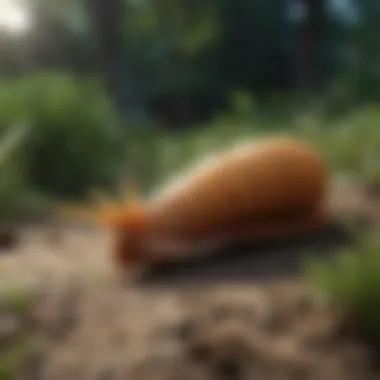
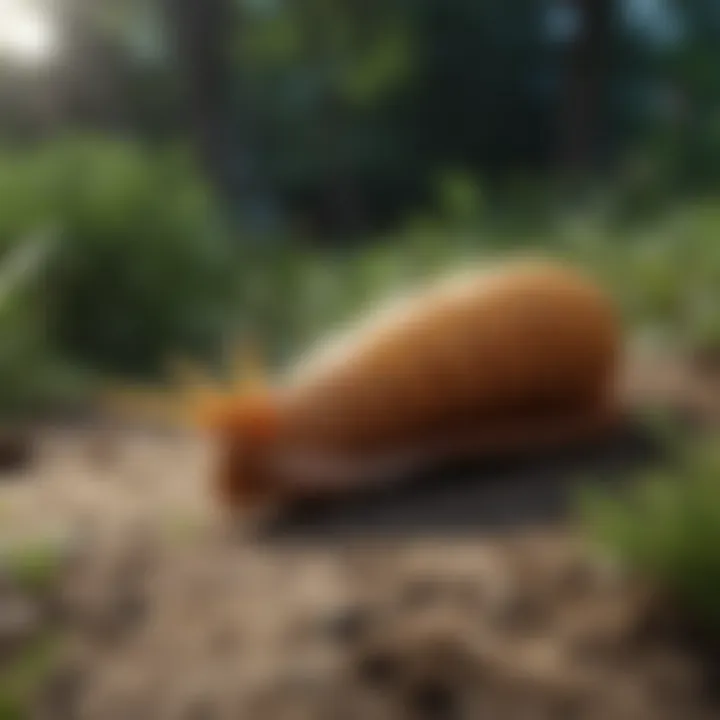
Crop Rotation
Crop rotation involves alternating the types of crops grown in a specific field across seasons. This strategy disrupts the life cycle of slugs and their food supply, which makes it less likely for their populations to establish. This characteristic of crop rotation not only hinders slug development but also promotes soil health and fertility.
A unique feature of crop rotation is its contribution to breaking pest cycles. Different crops attract different pests, which can prevent slugs from becoming established. However, it requires planning and knowledge about the compatibilty of various crops to ensure overall agricultural success and to avoid any potential issues.
Soil Management
Soil management focuses on maintaining healthy soil conditions that are less hospitable to slugs. Effective soil management includes practices such as reducing soil compaction, improving drainage, and ensuring appropriate moisture levels. A key characteristic of improved soil management is that it enhances plant health and vigor, making crops more resilient to slug damage.
The advantage of good soil management is its long-term benefits. Healthy soil supports diverse microbial life and promotes plant growth, which can overshadow the effects of pests. However, this strategy may require an initial investment of time and resources to achieve the desired results. With proper implementation, the enhanced resilience can yield significant returns in crop output over time.
Evaluating Effectiveness of Control Methods
Evaluating the effectiveness of slug pest control methods is crucial for optimizing agricultural practices. It is not sufficient to merely implement a strategy; the outcomes of each method must be rigorously assessed to understand how well they mitigate slug populations. This evaluation informs future pest management decisions and helps allocate resources more efficiently.
Key benefits of evaluating these control methods include:
- Resource Allocation: Understanding which methods are most effective allows farmers to direct their efforts and investments accordingly.
- Environmental Impact: Evaluating control methods can help minimize negative impacts on non-target species and ecosystems, fostering sustainable practices.
- Long-term Planning: Regular assessments enable farmers to adapt their approaches based on observed results and emerging research.
Continuous evaluation is essential for addressing changes in slug behavior and environmental conditions. As the ecosystem evolves, so too must the strategies to maintain effective control.
Assessing Outcomes
Assessing outcomes involves measuring specific parameters that indicate the success of the control methods employed. Metrics may include the reduction in slug populations, damage to crops, and overall yield improvements. Various tools exist to quantify these factors.
- Population Counts: Regular monitoring to count slug numbers can provide direct evidence of a method’s effectiveness.
- Crop Damage Rates: Documentation of damage levels before and after implementing control measures can show changes in crop health.
- Yield Measurements: Comparing yield data from treated areas versus untreated controls offers clear insight into the impact of slug control efforts.
Additionally, qualitative assessments are valuable. Farmer feedback, anecdotal evidence, and visual inspections can all contribute to a fuller picture of control effectiveness.
Documenting Changes
Documenting changes in slug populations and the associated impacts on agriculture over time is essential for informed decision-making. This documentation should include both quantitative and qualitative data.
- Record-Keeping: Maintaining detailed records of slug counts, crop damage, and environmental conditions can highlight patterns and aid in predicting future infestations.
- Periodic Reviews: Regular reviews of the collected data can help identify trends and adjust control strategies accordingly.
- Sharing Insights: Engaging with agricultural communities to share successes and challenges can enhance collective knowledge and improve slug management strategies.
"Documenting the changes enables a proactive approach towards pest management, rather than a reactive response to an infestation."
This consistent evaluation and documentation not only benefits individual farmers but also contributes to a wider knowledge base, supporting ongoing efforts in slug pest management. By taking these steps, agricultural stakeholders can ensure that their methods remain effective and sustainable.
Future Directions in Slug Pest Management
Emerging challenges in agriculture demand innovative approaches to pest management, especially concerning slug control. This section aims to explore the significant future directions in slug pest management. Understanding these factors is crucial as they can lead to more effective and sustainable strategies that address both current and upcoming agricultural needs.
Developments in technology and agronomy provide valuable insights into managing slug populations. Advancements in research can contribute to a deeper understanding of slug biology and behavior, informing more precise control methods. This insight supports the development of targeted and minimally invasive strategies.
Moreover, the integration of sustainable practices can enhance pest control while minimizing ecological disruption. Future directions should focus on methods that maintain biodiversity and promote natural predators.
This proactive approach not only targets slugs but also supports overall ecosystem health, offering long-term benefits to agricultural systems.
Emerging Research
New research initiatives focus on the biological and ecological aspects of slugs. Scientists study their interactions within ecosystems, seeking to identify natural enemies and optimal conditions for biological control. For instance, interrelations between slugs and specific nematodes or predatory insects are being analyzed to develop effective biological control agents. Understanding genetic variability among slug populations can also lead to tailored management strategies.
Genetic studies provide insights into resistance, reproductive capacities, and adaptability to pest control measures. This information can be instrumental when devising integrated multi-faceted strategies that include both biological and chemical controls. Furthermore, field trials using these natural enemies can help researchers gauge their effectiveness and practicality in real-world agricultural settings.
Sustainable Practices
The incorporation of sustainable practices into slug management is not just beneficial; it is necessary in contemporary agriculture. Techniques such as cover cropping, modifying irrigation practices, and implementing organic waste management can deter slug infestations.
- Crop Rotation: Changing crops each season disrupts slug life cycles and reduces population density.
- Organic Amendments: Adding compost or organic fertilizers can naturally impede slug presence by creating an unfavorable environment.
- Minimizing Soil Disturbance: Keeping soil structure intact promotes beneficial organisms that can keep slug populations in check.
- Encouraging Biodiversity: Diverse plantings help attract natural predators that may control slug numbers.
Implementing these sustainable practices aligns with modern agricultural trends valuing environmental conservation while addressing pest challenges. Doing so fosters resilience within farming systems, ultimately leading to enhanced productivity and reduced reliance on chemical control methods.



